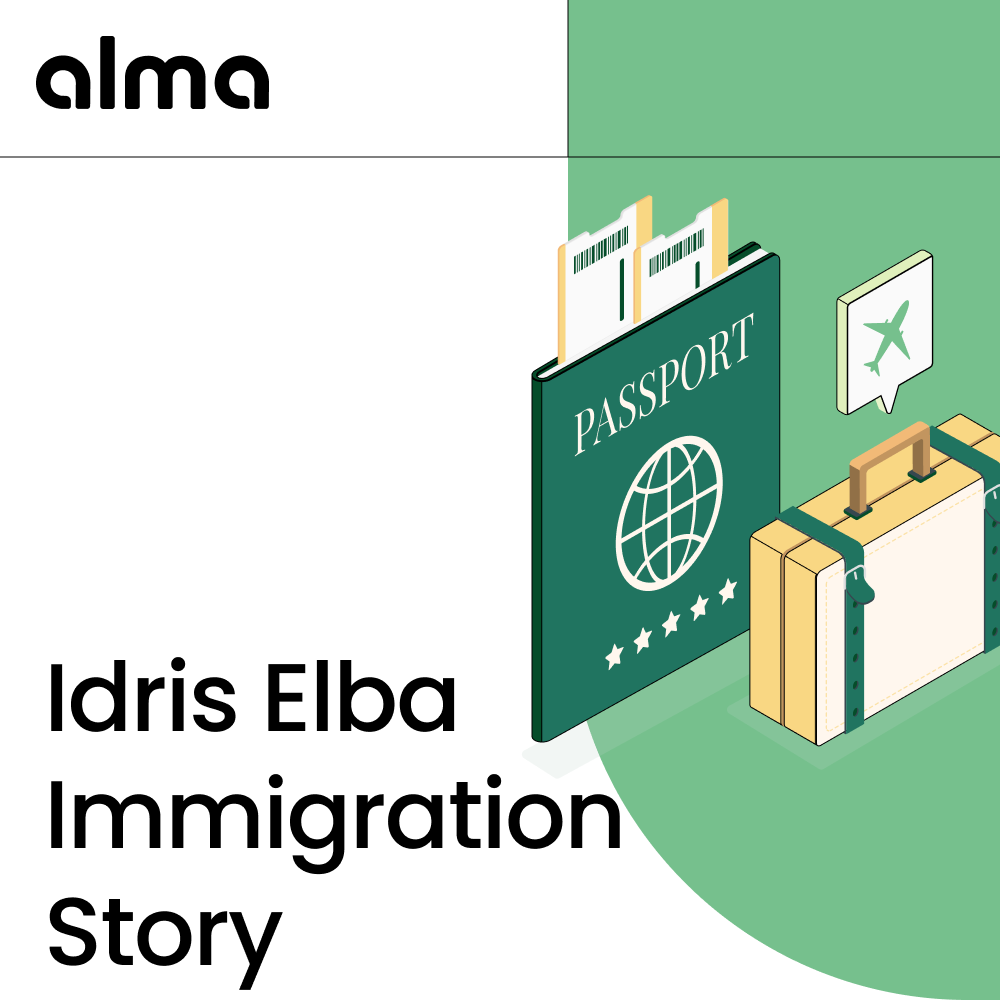- Elon Musk's immigration journey spanned multiple visa categories over several years, including student visas, work authorization, and permanent residency before citizenship in 2002
- His pathway demonstrates the importance of maintaining continuous legal status—gaps or violations can result in 3-10 year re-entry bans depending on overstay duration
- The transition from student to entrepreneur required strategic visa planning, with early work authorization questions highlighting compliance complexities
- Modern entrepreneurs can follow similar pathways through O-1, EB-1A, or EB-2 NIW visas designed for individuals with extraordinary ability or advanced expertise
- Recent policy changes include USCIS fee increases effective April 1, 2024, raising the H-1B registration fee to $215 for the FY 2026 registrations and adding a $600 Asylum Program Fee to most I-129/I-140 filings
- Processing times have improved significantly, with naturalization averaging 5 months in 2024, down from 11.5 months in 2021
Elon Musk's path from Pretoria, South Africa to becoming one of the world's most influential entrepreneurs required navigating the same complex U.S. immigration system millions face today. Born in 1971, Musk holds citizenship from three countries—South African by birth, Canadian through his mother, and American through naturalization in 2002—after approximately ten years of maintaining legal status through student and work visas. For tech professionals and founders pursuing similar ambitions, understanding these pathways through immigration services has become critical to building careers in the United States.
Who is Elon Musk? Education and Early Background
Elon Reeve Musk was born in 1971 in Pretoria, South Africa, making him 53 years old as of 2024. His childhood in apartheid-era South Africa shaped his eventual decision to pursue opportunities abroad, leveraging his mother's Canadian heritage as his first step toward North American residency.
Musk's educational trajectory took him across continents:
- 1989: Left South Africa for Queen's University in Ontario, Canada, avoiding mandatory military service
- 1992: Transferred to the University of Pennsylvania in the United States
- 1995: Earned dual bachelor's degrees in physics and economics from Penn
- 1995: Accepted into Stanford University's PhD program in energy physics but deferred after two days
The Stanford decision proved pivotal to his immigration status. In a 2005 email, Musk explained: "I didn't really care much for the degree, but I had no money for a lab and no legal right to stay in the country, so that seemed like a good way to solve both issues. Then the internet came along, which seemed like a much surer bet."
This candid admission reveals the challenge facing international students: education provides legal status, but leaving academia without proper work authorization creates immediate compliance issues. According to immigration law at the time, students must depart within 60 days after program completion unless authorized for practical training.
Elon Musk's Immigration Journey: From South Africa to Silicon Valley
Musk's immigration pathway followed the sequential pattern common among high-skilled professionals, though not without early complications. His journey began with Canadian citizenship obtained through his mother, Maye Musk, who was born in Saskatchewan. This provided a crucial stepping stone, as Canadian passport holders faced fewer barriers to U.S. entry in the 1990s than South African nationals.
The Student Visa Phase
Upon transferring to the University of Pennsylvania, Musk entered the United States on a student visa—either F-1 or J-1 status, which permits full-time study but strictly limits work authorization. These visas allow students to remain for the duration of their academic program plus optional practical training periods.
The challenge emerged when Musk left Stanford after just two days in 1995 to launch Zip2, his first startup. Derek Proudian, a former Zip2 board member, later testified that "their immigration status at the time was not what it should be for them to be legally employed running a company in the U.S." This period represents a gray area in Musk's immigration history, as working without proper authorization can permanently affect future visa eligibility.
Immigration experts noted that "upon not enrolling, Musk would have had to leave the country" according to legal requirements. "He would not have been allowed to work," Temple University guidance confirms regarding student visa rules. Musk denied these reports, claiming he was allowed to work in the US.
Transition to Work Authorization
Musk had secured proper work authorization, likely through the H-1B program that allows U.S. employers to temporarily hire foreign workers in specialty occupations. The program permits up to six years of work status and provides a pathway to permanent residency with employer sponsorship.
Permanent Residency and Citizenship
Musk received his green card through employment-based immigration, eventually becoming a naturalized U.S. citizen.
Today's entrepreneurs pursuing similar paths often choose between O-1 visas for extraordinary ability or EB-1A green cards that don't require employer sponsorship, providing more flexibility for startup founders.
The Visa Pathways Elon Musk Likely Used
Understanding Musk's probable immigration sequence illuminates options available to modern tech professionals and founders. While exact documentation remains private, immigration law and timing suggest a specific progression.
F-1 Student Visa and Optional Practical Training
International students in the United States enter on F-1 visas, which permit:
- Full-time enrollment at SEVP-approved institutions
- On-campus employment up to 20 hours weekly during school
- Optional Practical Training (OPT) for 12 months post-graduation
- STEM OPT extension for an additional 24 months (though this didn't exist in Musk's era)
The OPT period allows students to work in their field of study while maintaining legal status.
J-1 Exchange Visitor Visa
In a post, Elon Musk claims to have used a J-1 visa for his immigration:
- For Short-term academic, research, or structured training via a designated program sponsor (Form DS-2019).
- Academic Training for students (generally up to 18 months, longer for post-docs); Intern (up to 12 months) and Trainee (up to 18 months) programs.
- No dual intent; some participants face a two-year home-residency rule (212(e)) unless waived.
- Often a bridge to H-1B or other employment status after meeting/waiving 212(e).
H-1B Work Visa
The H-1B program became Musk's most likely path to authorized employment. This visa category:
- Requires employer sponsorship for specialty occupation roles
- Allows initial three-year periods, renewable for three more years
- Permits dual intent, meaning holders can pursue green cards while maintaining status
- Faces an annual cap of 65,000 new visas, with 20,000 additional visas for advanced degree holders
In 2024, the program approved about 400,000 applications including renewals, with India and China representing the top origin countries.
Employment-Based Green Card Categories
Musk's permanent residency likely came through EB-1 or EB-2 categories:
- EB-1 Extraordinary Ability: Self-petition option for individuals with extraordinary ability in sciences, arts, education, business, or athletics. No employer sponsorship required, making it ideal for entrepreneurs.
- EB-2 National Interest Waiver: For advanced degree holders whose work benefits U.S. national interests. Also permits self-petition in certain cases.
- EB-2 PERM: Traditional employer-sponsored green card requiring labor certification proving no qualified U.S. workers available.
Modern founders increasingly choose EB-2 NIW pathways or EB-1A petitions to avoid employer dependency. These routes align better with startup volatility and provide faster processing than traditional PERM-based applications.
For professionals navigating these complex pathways today, Alma's immigration services provide expert attorney support with a 99%+ approval rate and guaranteed two-week document processing, streamlining what can otherwise be a years-long process.
Lessons from Elon Musk's Immigration Story for Tech Founders
Modern entrepreneurs can extract actionable insights from Musk's immigration pathway, while avoiding the compliance gaps that characterized his early years.
Why Timing and Pathway Selection Matter
Key lessons include:
- Maintain continuous legal status: Gaps create long-term consequences, with overstays of 180 days but less than one year triggering 3-year re-entry bans, while one year or more results in 10-year bans
- Plan ahead for employment authorization: Student visa holders should arrange OPT or H-1B sponsorship before graduation
- Consider self-petition options: EB-1A and EB-2 NIW pathways eliminate employer dependency
- Document achievements early: Building evidence for extraordinary ability petitions requires systematic record-keeping
How Modern Founders Can Plan Their Immigration Journey
Today's tech entrepreneurs have more options than Musk did in the 1990s:
For Students: F-1 → OPT → H-1B → EB-2/EB-3 green card remains the traditional path. STEM graduates receive 36 months of OPT work authorization, providing extended time to secure H-1B sponsorship or build green card qualifications.
For Established Professionals: O-1 visas offer superior flexibility for founders, requiring no employer sponsorship and allowing self-petition. The visa applies to individuals with extraordinary ability in sciences, arts, education, business, or athletics.
For Entrepreneurs with Capital: E-2 treaty investor visas provide an alternative for nationals of treaty countries investing substantial capital in U.S. businesses, though it doesn't lead directly to green cards.
Alma's startup services streamline these pathways for companies managing 1-25 foreign nationals, offering flat-rate pricing, fast turnaround, and attorney expertise tailored to founder needs. With special partnerships with Y Combinator, Techstars, and other accelerators, Alma understands the unique challenges facing startup immigration planning.
Immigration Reform and Its Impact on Entrepreneurs Like Musk
The U.S. immigration system has undergone significant changes since Musk's arrival, with current reform debates directly affecting tech talent pathways.
Current Immigration Reform Proposals
Recent and proposed policy changes include:
- H-1B lottery modifications: For FY 2025, USCIS implemented beneficiary-centric selection to curb multiple registrations
- International Entrepreneur Rule: Provides parole for startup founders with significant investment and growth potential, though implementation has been inconsistent
- EB-5 investor visa reforms: Recent changes create faster processing for investments in targeted employment areas
- Startup visa proposals: Various Congressional bills propose dedicated visa categories for entrepreneurs, though none have passed
How Policy Changes Affect Tech Talent
Foreign-born workers accounted for 18.6% of the U.S. labor force in 2023. This reflects both policy changes and enforcement priorities, with implications for tech industry talent acquisition.
For founders and businesses, policy volatility creates planning challenges. Improved processing times for naturalization—averaging 5 months in 2024 versus 11.5 months in 2021—provide positive developments for permanent residents seeking citizenship.
What Founders Should Watch in Immigration News
Critical developments to monitor include:
- Annual H-1B cap announcements and lottery results
- USCIS processing time updates affecting visa categories
- Executive orders impacting employment-based immigration
- Proposed legislation for startup visas or entrepreneur pathways
- Fee increases and policy memoranda changing eligibility standards
Alma's business platform provides real-time dashboards and compliance tracking that help companies navigate these changing regulations, with proactive alerts ensuring teams never miss critical deadlines or policy shifts.
How to Navigate U.S. Immigration as a Tech Professional or Founder Today
Tech professionals and founders pursuing U.S. immigration today benefit from clearer pathways and better resources than Musk encountered, though complexity remains substantial.
Step-by-Step: Choosing the Right Visa
1. Assess Your Qualifications and Timeline
Evaluate your current status:
- Current visa status (if any)
- Educational credentials and work experience
- Achievements, publications, awards, and recognition
- Employment offers or startup plans
- Family circumstances and dependent needs
2. Identify Appropriate Visa Categories
Match qualifications to visa types:
- F-1 students: Use OPT period strategically to build H-1B eligibility or extraordinary ability evidence
- Extraordinary ability: Pursue O-1 or EB-1A if you have significant achievements, publications, or recognition
- Advanced degree professionals: Consider H-1B for immediate work authorization or EB-2 NIW for self-petition
- Intracompany transfers: L-1A/B visas work for executives or specialized knowledge workers transferring from foreign offices
- Treaty nationals: TN (Canadian/Mexican) or E-3 (Australian) visas provide streamlined options
3. Understand Timeline Requirements
Typical processing periods:
- H-1B: Annual lottery in March, October start date, 15-day premium processing available
- O-1: No annual cap, 15-day premium processing available, renewable indefinitely
- EB-1A/EB-2 NIW: 6-18 months for I-140 approval, plus adjustment of status or consular processing
- Naturalization: 5 years as permanent resident (3 years if married to U.S. citizen), then 5 months average processing
Working with Immigration Attorneys
Professional legal guidance proves critical for several reasons:
- Petition strategy: Attorneys identify strongest visa categories and build compelling cases
- Documentation: Proper evidence compilation significantly affects approval rates
- RFE responses: Request for Evidence requires expert legal interpretation and response
- Compliance: Avoiding status gaps and violations that trigger re-entry bans
Alma's immigration attorneys bring expertise across all visa categories, combining a 99%+ approval rate with transparent pricing and guaranteed two-week document processing. The attorney-led, technology-enabled platform eliminates the typical delays and opacity that plague immigration applications.
Technology Platforms That Streamline Applications
Modern immigration technology transforms the traditionally cumbersome process:
- Case tracking dashboards: Real-time status visibility replacing email-based updates
- Document collection portals: Secure upload systems for employees and HR teams
- Automated deadline reminders: Proactive alerts preventing compliance lapses
- Integrated workflows: Seamless coordination between attorneys, clients, and support staff
Alma's platform integrates with major HRIS systems including Workday, ADP, BambooHR, and Rippling, creating a single source of truth for all immigration matters while maintaining audit-ready compliance records.
Other Articles
- List of Immigration Lawyers in Georgia
- Lighthouse Alternatives
- Lawfully Alternatives
- 18 Employment-Based Visa Statistics
- 18 Green Card Statistics
- 11 Visa Approval Rate Statistics
- 15 Visa Denial Rate Statistics
- Patrick Collison and their immigration story
- Vlad Tenev and their immigration story
- Satya Nadella and their immigration story
- Sergey Brin and their immigration story
- Parag Agrawal and their immigration story
- 14 Extraordinary Ability Visa Statistics
- 16 O-1 Approval Rate Statistics
- 15 High-Skilled Immigration Statistics
- 19 Visa Petition Statistics
- 12 I-140 Approval Statistics
Frequently Asked Questions
While Musk's early work authorization status raised questions—with a Zip2 board member noting "their immigration status at the time was not what it should be"—no public records indicate formal enforcement actions or penalties. He successfully obtained work authorization and eventually permanent residency and citizenship. This illustrates how immigration violations don't always result in enforcement, though they create risk. Today's stricter compliance environment makes such gaps more dangerous, as overstays trigger automatic re-entry bans of 3-10 years.
F-1 students can own businesses but face strict work limitations. They cannot actively work for their company except during authorized employment periods (on-campus jobs or OPT). Passive ownership—holding equity without active day-to-day work—remains permissible. Most successful student entrepreneurs wait until OPT periods or secure alternative work authorization before actively running their ventures. The legal gray area that existed in Musk's era has tightened significantly, making compliance planning essential.
While the U.S. lacks a dedicated startup visa, several pathways serve founders. O-1 visas work best for founders with significant achievements, press coverage, or advisory board positions demonstrating extraordinary ability. EB-1A green cards allow self-petition for extraordinary ability with no employer sponsorship required. EB-2 NIW provides national interest waivers for those whose ventures benefit U.S. interests. The International Entrepreneur Rule provides parole (not visa status) for founders with significant investment and growth. E-2 treaty investor visas serve treaty country nationals investing substantial capital, though they offer no direct green card path. Alma's startup services help founders identify the optimal pathway based on individual circumstances, with pricing transparency and fast turnaround critical for time-sensitive startup operations.
Employer-sponsored visas like H-1B create vulnerability during transitions. If employment ends, holders typically have a 60-day grace period to find new sponsorship, change status, or depart. This makes employer-dependent visas risky for startup employees facing volatility. Self-petition options like O-1, EB-1A, or EB-2 NIW eliminate this dependency, as status doesn't depend on specific employer relationships. For founders, entity structure matters—the petitioning employer (your startup) must continue operating to maintain visa validity, though you can typically transition to another employer if your company fails. H-4 spouses may be eligible for work authorization (EAD) in limited situations; O-3 spouses cannot work; L-2 spouses are employment-authorized incident to status.
%20(1).png)



.png)
.png)


